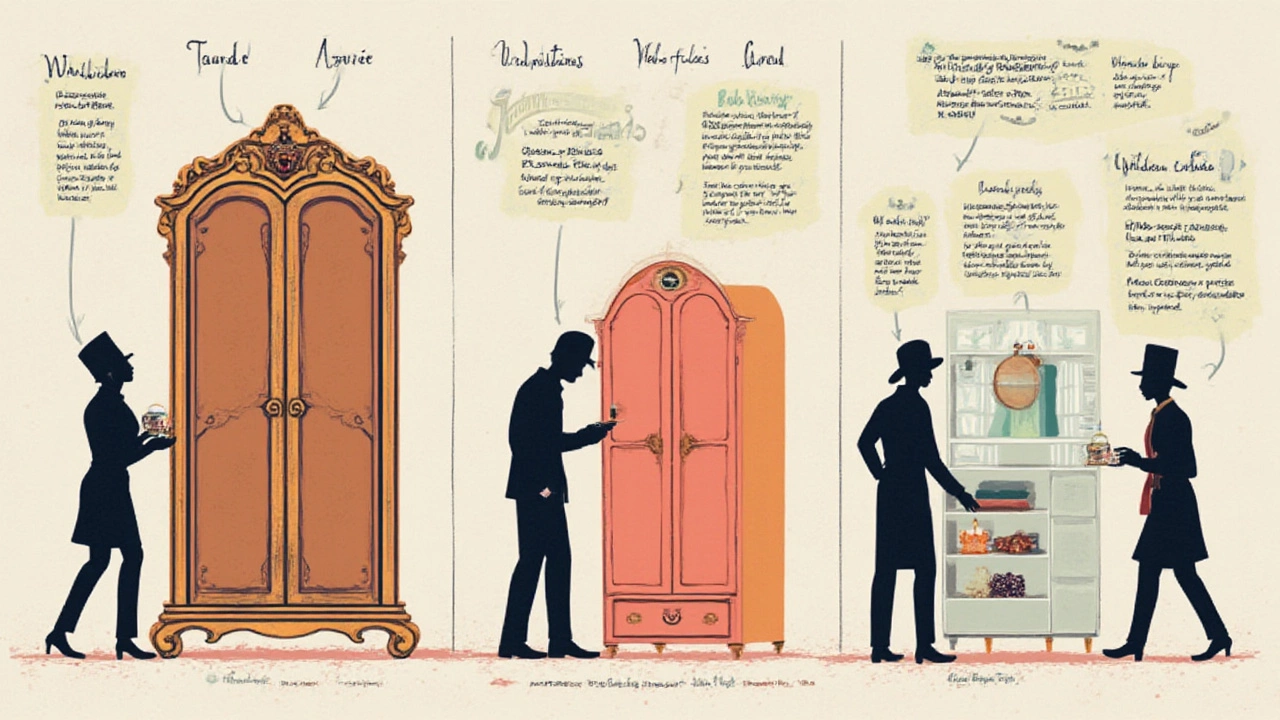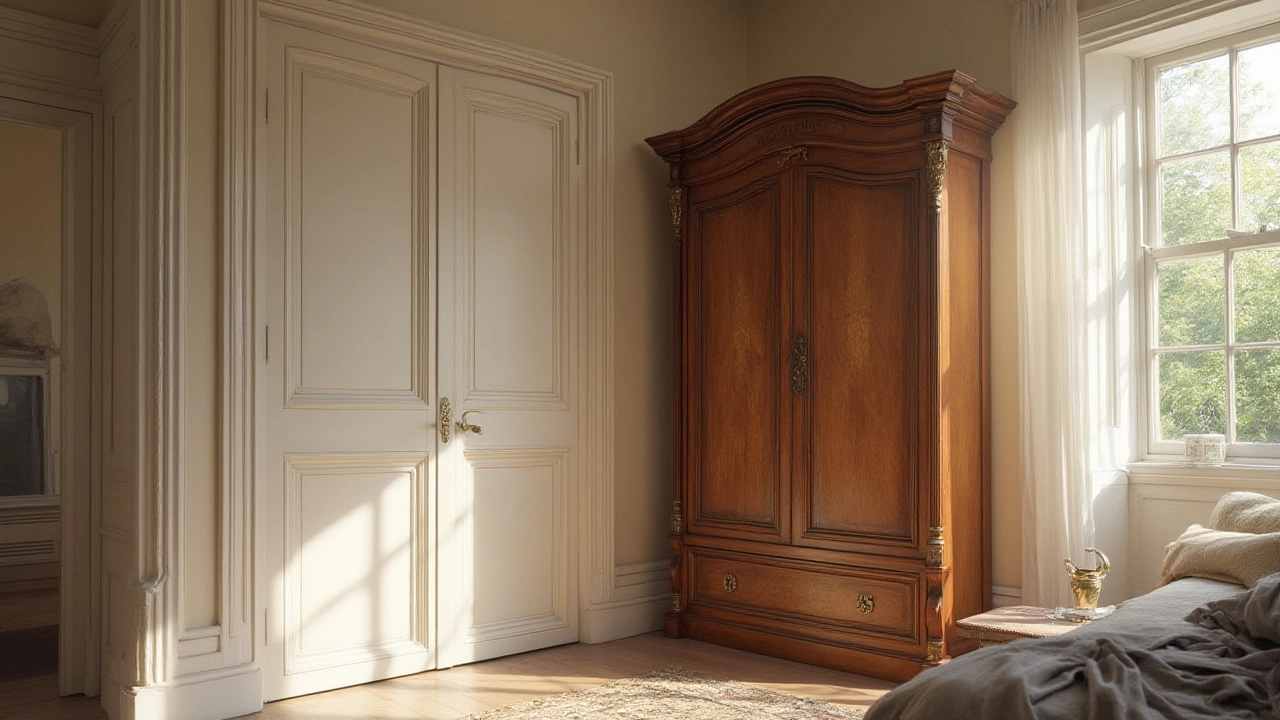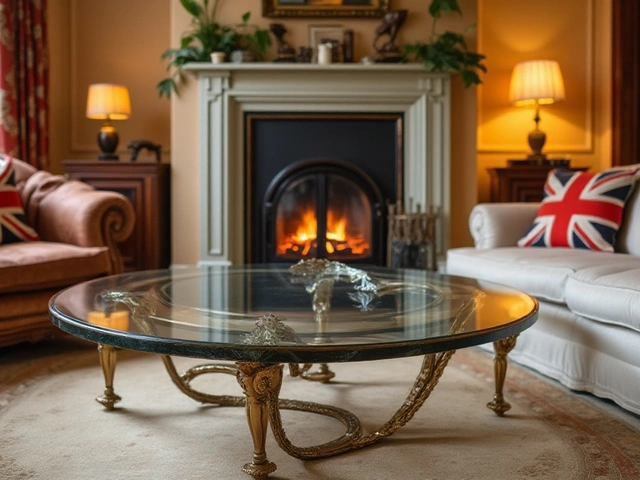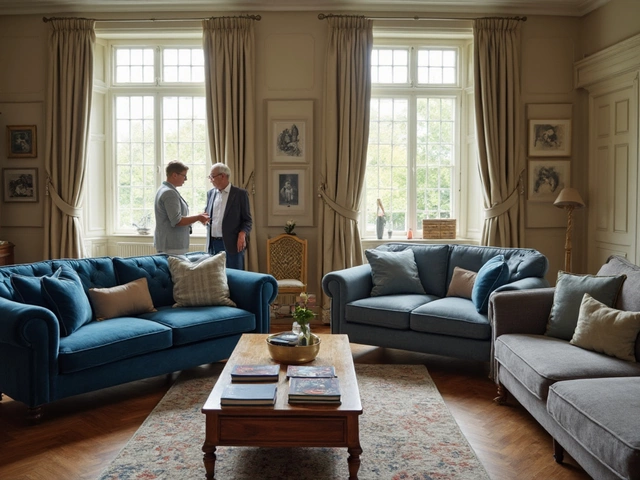Picture this: you’re staring at a gorgeous, towering wooden piece in your Nan’s hallway, wondering if it’s a wardrobe or just an old closet. Or maybe you’re flat hunting and estate agents keep tossing around the words “closet” and “wardrobe” as if everyone in Leeds was born knowing the difference. Nobody wants to admit they’re a bit foggy on it, but being honest, most people are. This isn’t some stuffy design quiz—it actually matters, especially when you’re trying to make your tiny box-room work or you’re debating which piece of furniture to splurge on next. Dive deeper, and you’ll find the battle of closet vs wardrobe says plenty about where you live, how you store stuff, and how tidy you can look to the casual visitor. We'll clear up the confusion and arm you with practical tips—plus plenty of quirky facts to drop at your next dinner party.
What’s a Closet, What’s a Wardrobe? Defining the Basics
First, let’s get this out of the way: if you live in the UK, the word “closet” probably sounds slightly American, and you rarely hear folks call their fitted storage a “closet”, unless they're channeling a bit of Stateside drama. In the US, though, closet is the norm—it just means a small room or enclosed space, often built into the wall, for storing clothes, cleaning stuff, or odds and ends. It’s not always glamorous, but it’s practical.
Wardrobes, on the other hand, have a much more stately vibe. They’re standalone pieces of furniture, usually with doors and sometimes with drawers at the bottom. Open a wardrobe, and you might see rails, shelves, or deep spaces where old Christmas jumpers and last year’s resolutions gather dust. The key point: a wardrobe isn’t built into the house. You can, and often do, move it from one flat to the next (assuming you don’t snap your back in the process).
So why the split? This comes down to history and architecture. The classic English house, built before central heating was a thing, rarely had built-in storage in the bedroom. Freestanding wardrobes (think Narnia style) were a must. Meanwhile, American homes—plus newer UK builds—tend to feature “closets” as built-in spaces, partly because rooms were larger and construction methods changed.
Here’s a handy table so you can spot the difference at a glance:
| Feature | Closet | Wardrobe |
|---|---|---|
| Built-in/Freestanding | Built-in | Freestanding |
| Origin | Mostly US; newer UK homes | UK, Europe, traditional homes |
| Storage Features | Shelves, rails, sometimes drawers | Rails, shelves, drawers (inside or at base) |
| Mobility | Fixed, non-movable | Movable, can be relocated |
| Customisation | High with renovation | High; pick different styles/sizes |
| Common Size | From tiny cubby to walk-in | From narrow to massive "triple" |
The bit that always surprises people: it’s not just fashion. The Industrial Revolution saw wardrobe design move from chunky, dark woods to sleek, mirrored fronts and now flat-pack wonders you build with leftover IKEA screws. Closets morphed from little broom cupboards to luxury walk-in palaces (with enough room for your shoes to have their own postcode). And the tech? You can get lights that switch on when you open the wardrobe, and sliding shelves designed for tricky alcoves.

When Should You Choose a Closet, and When a Wardrobe?
Realistically, most Yorkshire terraces and city flats aren’t giving you Narnia-sized spaces or American ranch-style walk-ins. You’ve got to play Tetris with what you’ve got. But picking between a closet and a wardrobe isn’t just about taste—it’s about function, space, needs, and a dash of style.
If your home already has a closet (those little built-in cubbies behind a door), squeeze the most out of it. Look for adjustable shelving, hanging organisers, or even stick-on hooks. Closets often hide dead space—don’t waste it. You can double your storage with under-shelf baskets. A 2023 survey from a UK home improvement magazine showed people with organised closets found getting ready in the morning 37% less stressful. Makes sense, right? Less faff, less rush.
Now, if there’s no closet in your bedroom, or the one you’ve got is the size of a shoebox, you’re in the right era because wardrobes are everywhere. Freestanding wardrobes come in a wild range of sizes. Need a slim one for the box room? Get a single. Got more floor space or sharing with a partner? Try a double or triple—though measure your doorways first (seriously, nothing crushes your weekend like a wardrobe stuck on the staircase for eternity).
People who rent love wardrobes for a reason—you can take them when you move. You also get more choice: pine, walnut, mirrored doors, soft-close drawers, rustic old pieces found in charity shops. Some even have hidden jewellery drawers or built-in lighting.
Think about maintenance too. Closets rarely need much care, unless you’re shifting the shelves or painting inside. Wardrobes can need a bit more TLC—check hinges, keep them level so doors don’t sag, and clean inside to fend off that musty smell. Chuck a sachet of lavender in if you want to feel fancy!
Some handy tips for making either option work:
- Measure twice: Before buying a wardrobe or fitting out a closet, check every nook and cranny—height, width, even distance from the ceiling for those big winter coats you never wear.
- Consider corners: Corner wardrobes and L-shaped closet organisers give you storage in those forgotten spaces.
- Don’t just hang everything: Fold heavier jumpers, use rails for shirts and lighter gear. Try vertical storage to avoid crumpled piles at the bottom.
- Fix lighting: Motion-sensor LED strips make a world of difference, especially in dark built-ins.
- Add a mirror: Mirror-front wardrobes double up as space-savers and make small rooms feel lighter.
There’s also the social side—seriously. One of the wildest things: a study in 2021 found 54% of Brits secretly judge people by how tidy their wardrobes or closets are. Doesn’t mean you need to be neat as a pin, but hey, you’ve been warned.

Mixing Old and New: Inspiration for Modern Living Spaces
Say you love the look of classic wardrobes but your flat is all new, sharp lines and minimalist vibes. Or vice versa, you’re in a Georgian townhouse but itching for clever American-style storage. Mixing old and new is smarter than forcing your space to work against itself. One way to do this is picking a wardrobe with a modern twist—maybe one with sliding doors (which are a lifesaver in bedrooms where the bed is far too close to the wall), or fitted LED lights.
Flat-pack wardrobes have come a long way. Some companies now custom-build to weird measurements—perfect if you’ve got sloping ceilings or awkward alcoves. In Leeds, local storage wizards offer fitted wardrobes that can slot straight into the gap where a built-in closet would go, so you get the best of both worlds: tidy, made-to-fit, but still removable when you move on.
If you’re lucky enough to have a walk-in closet, treat it like its own room. Add an ottoman or a small bench, and use clear containers for shoes and accessories. It doesn’t take superstar money—look out for sales and online marketplaces for gently used pieces. And don’t be scared of vintage wardrobes. The older pieces are sturdy and often better built than today’s flat-pack. Sand them down and add a fresh coat of paint for a quick update.
People often forget the psychological angle. Studies show that having all your stuff in one accessible, well-organised place can make you feel more in control—even help you sleep better. Less clutter, less stress.
If you’re sharing a space, go for wardrobes with double rails, or install closet organisers that can split the section. Small apartment? Try “capsule wardrobe” storage, where you rotate seasonally. That single wardrobe can hold more than you think if you’re clever with storage cubes and boxes.
- For families: Labelling boxes and baskets helps kids put things back (at least in theory).
- For clothes addicts: Consider a garment rack for overflow rather than stuffing everything in, risking creased shirts and broken railings.
- For neat freaks: Allocate a monthly ten-minute tidy to keep chaos at bay. Setting a reminder on your phone actually works.
One last quirky fact: in some Scandinavian homes, people still use freestanding wardrobes instead of built-ins by tradition, so moving house means packing your clothes, furniture, and your wardrobe—all in one go! It’s a nod to both practicality and heritage. A bit like how in the UK, the right wardrobe can be a statement piece that outlives sofas, beds, even old carpets. So next time you clock that big wooden cabinet, or open a built-in sliding closet door, remember—what you call it tells a story about your home, your habits, and sometimes where your family roots started out.



